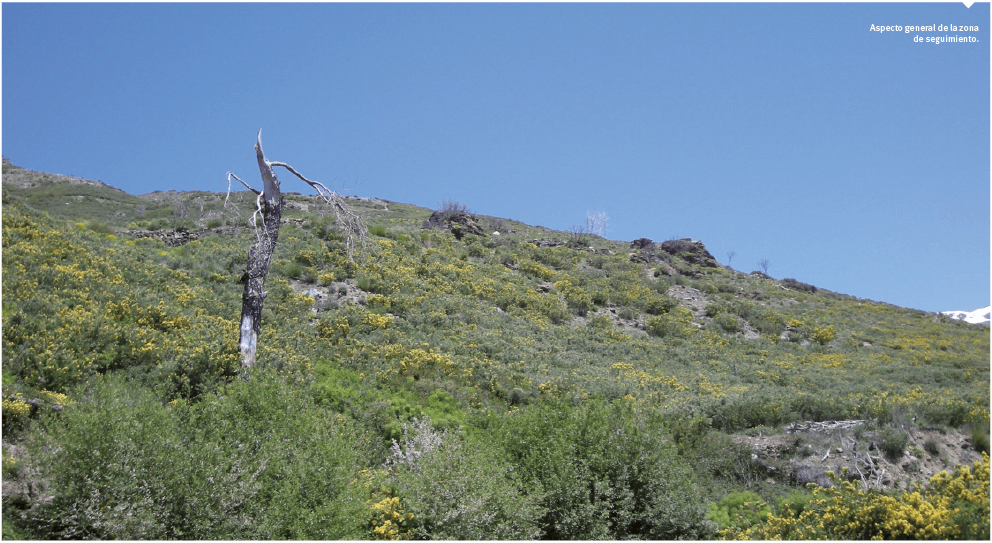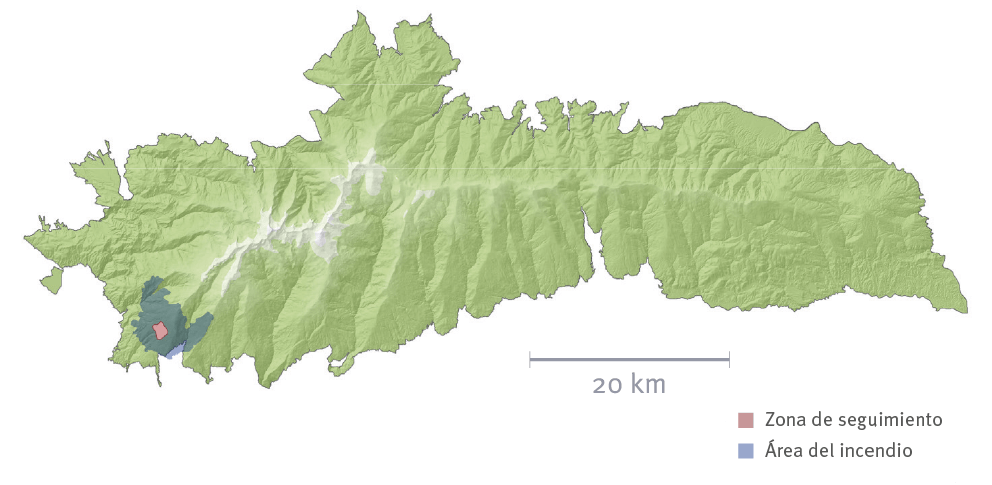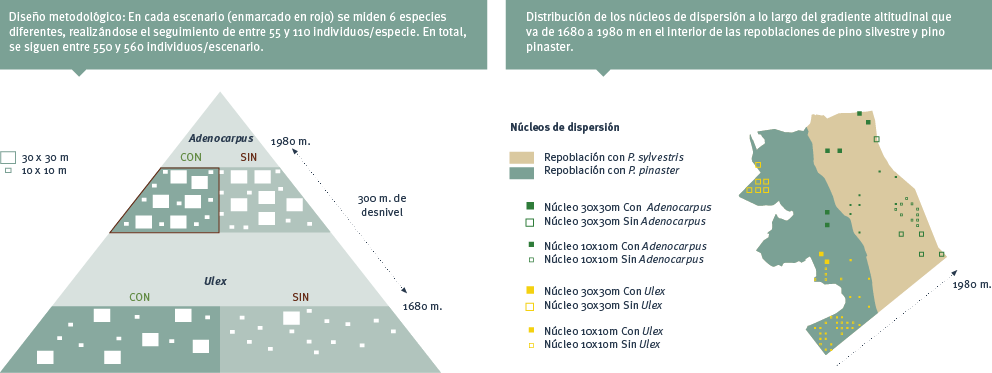
Aims
The general goal is to evaluate the effectiveness of a forest-restoration plan after a fire that burned some 3000 ha in the year 2005 and that affected mainly reforested pines.
The specific objectives are:
- To evaluate the effects of different techniques of restoring the forest area.
- To analyse the survival and differential growth of a diverse number of tree and shrub species used in restoration.
- To analyse the influence of pioneer shrublands and the height over the seedlings in the dispersion cores, taking into account survival, growth, and herbivory.
- To analyse the effect of elevation and exposure on the survival and growth of the young plants in the traditional reforested stands.

Method and effort
The experimental approach consists of monitoring the restoration through the dispersion cores and traditional reforested stands.
Dispersion cores: measure 30 x 30 m and 10x10 m. In these, individuals of Crataegus monogyna, Rosa canina, Berberis hispanica, Prunus ramburii, and Quercus ilex subsp. ballota, were planted 25, 50, and 100 m apart. Each of these nuclei are surrounded by pines, using Pinus sylvestris at the highest elevations and P. pinaster at the lowest. The six introduced species are monitored in two scenarios at the low elevations (with and without the presence of the Ulex spp.) and another two at high elevations (with and without Adenocarpus sp.). A total of 55-100 individuals of each of the 6 species were marked among the 550-560 individuals in each of the four scenarios. In addition, the presence or absence of pioneer shrubland (Adenocarpus sp. and Ulex spp.), and the influence of other factors, such as elevation and size of the nucleus, are also evaluated.
Traditional reforestation stands: in these, the same species are grouped in wooded areas of variable dimensions. The development of the population is evaluated in two areas: one on the southern slope at 1,540 m and another on the western slope at 2,140 m. In each area, 30 individual plants of the 6 species chosen were tagged individually for monitoring.

Periodicity
Individualized monitoring is undertaken twice yearly, once in spring and once in autumn, to evaluate winter and summer mortality, respectively.
References
Beschta, R. L., Rhodes, J. J., Kauffman, J. B., Griesswell, R. E., Minshall, G. W., Karr, J. R., Perry, D. A., Hauer, E. R. y Frissell, C. A. 2004. Postfire management on forested public lands of the western United States. Conserv. Biol., 18: 957-967.
Marañón-Jiménez, S., Castro, J., Kowalski, A. S., Serrano-Ortiz, P., Reverter, B. R., Sánchez-Cañete, E. P. y Zamora, R. 2011. Post-fire soil respiration in relation to burnt wood management in a Mediterranean mountain ecosystem. Forest Ecol. Manag., 261: 1436-1447.
Castro, J., Allen, C. D., Molina-Morales, M., Marañón-Jiménez, S., Sánchez-Miranda, A. y Zamora, R. 2011. Salvage logging versus the use of burnt wood as a nurse object to promote post-fire tree seedling establishment. Restor. Ecol., 19(4): 537-544.